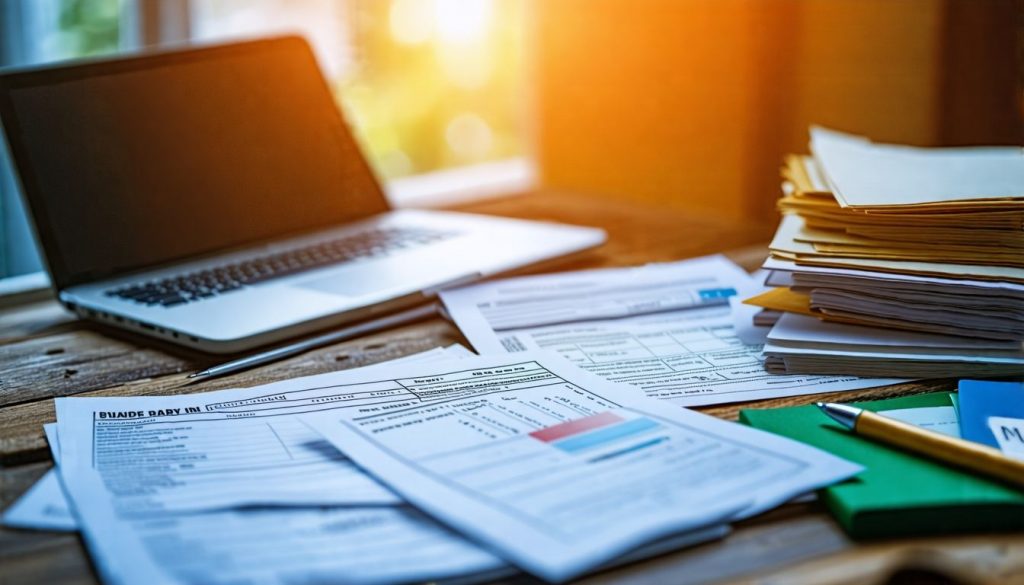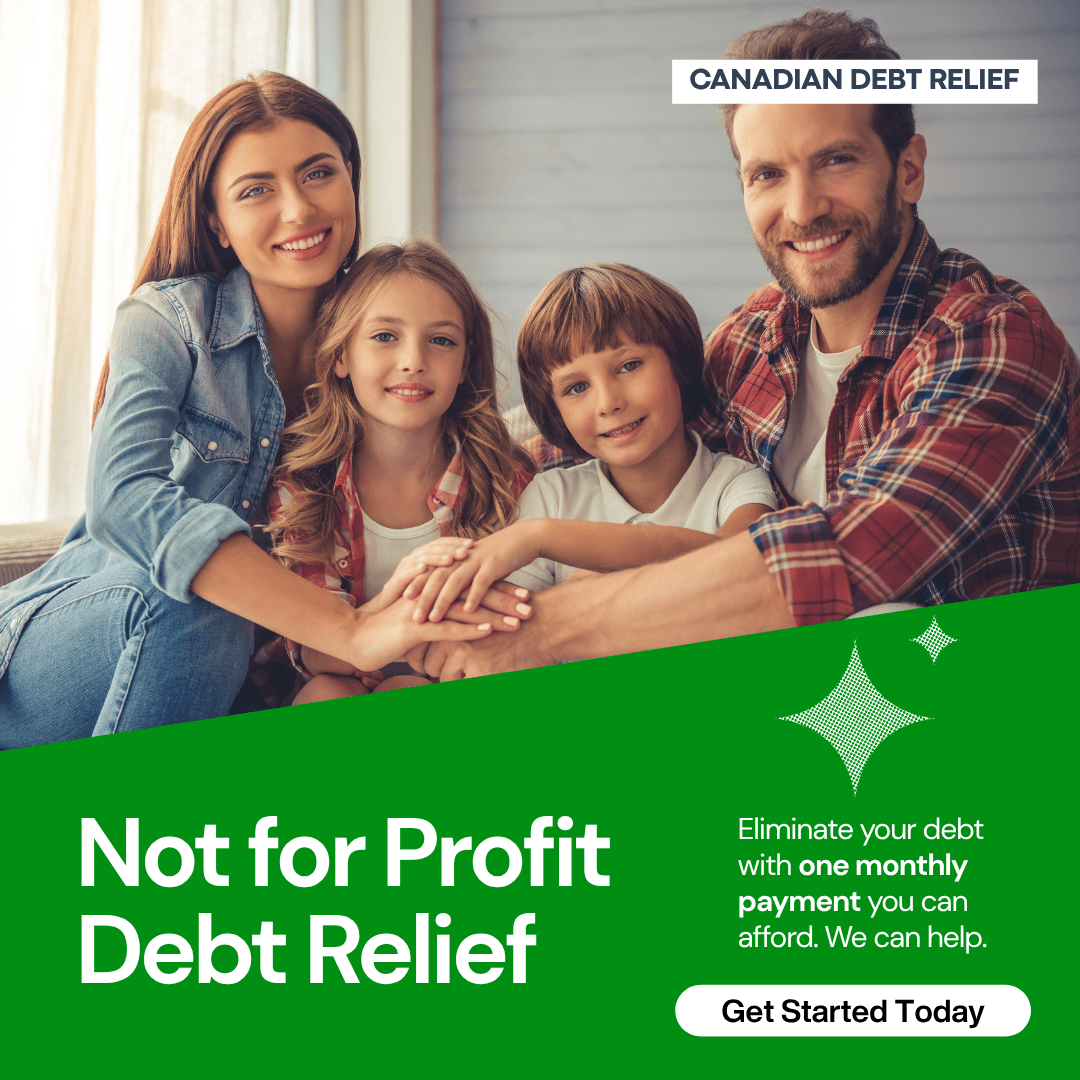Struggling with credit card debt is a common problem many face. A surprising fact: Canadians now have over $100 billion in credit card debt. This article outlines the best way to pay down credit card debt, offering four effective strategies that will help you become debt-free faster.
Discover your path to financial freedom here.
Key Takeaways
- Use the snowball or avalanche method to tackle credit card debt by either paying off small debts first for momentum or targeting high-interest debts to cut down on total interest paid.
- Consider consolidating your debt with a personal loan or balance transfer credit card to secure lower interest rates and simplify monthly payments.
- Adjust your spending habits by tracking expenses, creating a budget, cutting unnecessary subscriptions, and cooking at home. Redirect saved money towards paying off credit card balances faster.
- Explore tapping into home equity for lower-interest funds if other means of repayment are not sufficient. Always use such strategies responsibly to avoid further financial strain.
- Stay motivated by celebrating small wins when you pay off each debt piece. Consistency and determination in following these strategies can lead you toward becoming debt-free sooner.
Understanding Credit Card Debt
Credit card debt occurs when you borrow money on your credit card and do not pay it off in full by the due date. This type of debt can quickly grow because of high interest rates, making it crucial to chip away at it as soon as possible.
What is credit card debt?
Credit card debt refers to the amount of money you owe on your credit cards after making purchases, cash advances, or balance transfers. In Canada, many individuals face this type of debt due to the convenience of using credit cards for everyday expenses.
High-interest rates often accompany these debts, which can make repayment challenging if not managed properly.
Paying off credit card debt quickly is essential to avoid accumulating additional interest and fees that can hinder financial stability. Utilizing effective methods for paying down debt helps individuals regain control over their finances and achieve a debt-free lifestyle faster.
Managing and reducing credit card debt requires a strategic approach.
Why it’s important to pay it off quickly
Paying off credit card debt quickly is crucial for maintaining financial health. High-interest rates can lead to accumulating debt that feels impossible to manage. For Canadians, interest rates on credit cards can exceed 19 percent or more, which compounds the overall amount owed each month.
This means that failing to act swiftly may result in being trapped in a cycle of minimum payments while your balance continues to grow.
The longer outstanding balances remain unpaid, the harder it becomes to regain control over your finances. Prioritizing repayment strategies like focusing on high-interest debt allows you to minimize costs and pay down what you owe faster.
Implementing effective budgeting tips and payment strategies helps create a clear path toward financial freedom, enabling you to eliminate credit card debt effectively and reclaim your peace of mind.
Best Strategies to Pay Off Credit Card Debt
Managing credit card debt requires smart strategies. Effective approaches can help you pay down what you owe quickly and efficiently.
Target one debt at a time
Focusing on one credit card debt at a time can significantly streamline the repayment process. This strategy allows you to allocate your funds more effectively. Prioritize your debts by interest rates or balances, targeting the one with the highest rate first for maximum impact.
By channeling your resources into this single debt, you’ll see quicker results and gain motivation as it diminishes. This approach is part of effective credit card repayment strategies many Canadians find beneficial.
One common method involves either the snowball or avalanche technique. The snowball method encourages starting with smaller debts to build momentum, while the avalanche focuses on paying off high-interest debt quickly.
Both methods emphasize focusing on one debt until it’s fully cleared before moving on to another, ensuring you manage and reduce credit card debt efficiently over time.
Focus on high-interest debt
High-interest debt can be a significant burden. Paying it off quickly reduces the amount of interest you will pay over time, freeing up your finances for other priorities. Start by identifying your credit cards with the highest interest rates.
Concentrating on these debts first can accelerate your progress towards becoming debt-free.
By implementing effective strategies for reducing credit card debt, such as making larger payments toward high-interest accounts, you can minimize your total repayment costs. Managing and reducing credit card debt in this way is crucial for achieving financial stability.
Prioritize paying off high-interest debt to regain control of your financial future faster.
Utilize the snowball method
The snowball method is a powerful strategy to pay off credit card debt quickly. This approach focuses on tackling your smallest debts first, building momentum as you go.
- List Your Debts: Write down all your credit card debts from the smallest balance to the largest. This will help you see exactly what you owe and create a clear plan for tackling them.
- Make Minimum Payments: For every debt except the smallest one, make only the minimum payments each month. This keeps your accounts in good standing while allowing extra funds to target the smallest debt.
- Focus on the Smallest Debt: Put any extra money you have toward paying off this debt aggressively. Even small amounts can make a difference over time and help eliminate it faster.
- Celebrate Small Wins: Once you’ve paid off your smallest debt, take a moment to celebrate! This success boosts your motivation and encourages you to keep going with the next debt on your list.
- Repeat the Process: Move on to the next smallest debt and apply the same strategy. As each debt disappears, you’ll have more money freed up to tackle larger debts quickly.
- Stay Committed: Keep using this method until all your debts are gone. Consistency and determination are key elements of effective credit card debt repayment strategies.
This method helps manage interest rates effectively while building confidence in your financial planning skills as you work towards becoming debt-free. Next, explore other ways to pay off credit card debt that can complement this approach.
Consolidate debt
Consolidating debt can simplify your financial situation. By combining multiple credit card debts into one loan, you can often secure a lower interest rate. This strategy not only reduces monthly payments but also helps in managing finances more effectively.
Many Canadians are turning to debt consolidation options like personal loans or lines of credit to streamline their payment process.
Using a balance transfer option offers another avenue for consolidating high-interest debt. It allows you to move existing balances from higher-rate cards to one with a promotional low interest rate, saving money on interest over time.
Monitoring these strategies closely can facilitate paying off credit card debt quickly and efficiently, ultimately leading you toward becoming debt-free faster.
Other Ways to Pay Off Credit Card Debt
Consider balance transfers to lower your interest payments. You can also explore home equity options for additional funds. Adjusting your spending habits can free up cash as well. Each of these methods offers opportunities for faster debt repayment.
Discover more about how to tackle credit card debt effectively.
Transfer balances
Transferring balances can be a smart move for Canadians looking to eliminate credit card debt. This strategy involves moving high-interest debt from one card to another, often to a card with a lower interest rate or an introductory offer of 0% APR for balance transfers.
By doing this, you can reduce the amount of interest paid over time and pay off your balances faster.
Many financial institutions offer balance transfer options that can help streamline your payments. It’s crucial to read the fine print, as some cards have fees associated with transfers or may revert to high rates after promotional periods end.
Using this method along with effective monthly payment strategies for credit card debt can significantly accelerate your journey towards becoming debt-free.
Tap into home equity
Tapping into home equity can be a viable strategy for Canadians looking to pay down credit card debt. Home equity is the difference between your home’s market value and the amount you owe on your mortgage.
By borrowing against this equity, you could secure funds at a lower interest rate compared to high-interest credit cards. This method allows for significant savings in interest payments over time.
Many homeowners choose options like a home equity line of credit (HELOC) or a second mortgage, which often offer favorable terms. Prioritize paying off high-interest debt with these funds, as it can accelerate your path toward becoming debt-free.
It’s essential to assess this option carefully to ensure responsible management of additional debt while utilizing such financial tools effectively.
Review and adjust spending habits
Adjusting spending habits can significantly impact your ability to pay down credit card debt. Canadians can find effective ways to reduce expenses and allocate more funds toward debt repayment.
- Track Your Expenses
Keeping a detailed record of all your purchases helps you understand where your money goes. Use apps or spreadsheets for easy tracking. Seeing the numbers may reveal unnecessary spending that you can cut back on.
- Create a Budget
Establishing a monthly budget allows you to set limits on different categories such as groceries, entertainment, and dining out. Stick to this plan and prioritize paying off high-interest debt in your budget allocations.
- Identify Unnecessary Subscriptions
Review all subscriptions, from streaming services to gym memberships. Cancel any that you do not use regularly or that do not provide enough value for your money.
- Shop Smart
Look for sales, use coupons, and compare prices before making purchases. Being mindful of your spending can help save significant amounts over time, which you can then apply towards debt reduction strategies.
- Limit Impulse Buying
Avoid making hasty purchases by implementing a 24-hour rule before buying non-essential items. This delay gives you time to consider if the purchase is necessary or if it will hinder your goal of becoming debt-free.
- Cook at Home
Preparing meals at home is often cheaper than eating out or ordering takeout frequently. Meal prepping can save both time and money while also promoting healthier eating habits.
- Seek Out Free Activities
Explore free local events such as community festivals, art exhibits, or outdoor activities instead of pricey entertainment options. You can have fun without overspending while building connections in your community.
- Reevaluate Major Expenses
Look at recurring major expenses like rent or insurance premiums. Consider negotiating rates with landlords or switching providers for better deals that fit into updated financial goals.
- Practice Mindful Spending
Reflect on each purchase’s necessity before committing to it during shopping trips. Prioritizing essential items helps ensure that you only spend on what truly matters, allowing for more savings directed towards eliminating credit card debt.
- Set Financial Goals Together
If sharing finances with a partner or family members, work together to set shared goals for saving and paying down debts together efficiently without hindering personal needs.
These adjustments create an opportunity to redirect saved funds toward focusing on effective strategies like eliminating high-interest debts faster and avoiding minimum payment pitfalls.
Conclusion
Paying off credit card debt is attainable with the right strategies. Focus on one account at a time to reduce overwhelm. Prioritize high-interest balances for quicker relief. Using methods like the avalanche or snowball approach can accelerate your progress significantly.
Stay committed, adjust spending habits, and soon you’ll find yourself debt-free!
FAQs
1. What are some effective strategies for paying down credit card debt?
The best way to pay down credit card debt includes four key strategies: Interest rate management, the avalanche method, avoiding only making minimum payments, and focusing on eliminating high interest debts first.
2. How does the Avalanche method help in becoming debt-free faster?
The Avalanche method is a strategy where you focus on paying off high-interest debts first. This helps reduce the total amount of interest you’ll have to pay over time, allowing you to become debt-free faster.
3. Why should I avoid making just the minimum payment on my credit cards?
Making only minimum payments can prolong your repayment period significantly because it doesn’t make much dent in your principal balance. It’s one of the ways to eliminate credit card debt slower rather than faster.
4. Can managing my interest rates help me get out of debt quicker?
Yes! By negotiating lower rates with your creditors or transferring balances from higher-rate cards to those with lower rates, you can save money on finance charges and pay off your debts sooner.








